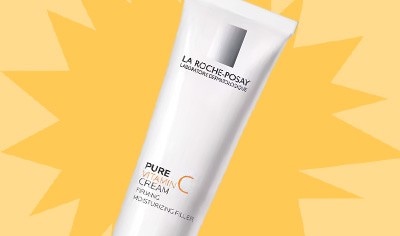
By Dr. Joel Schlessinger
The birthmark, a 'port-wine stain', that is seen on Agatha's (Saoirse Ronan) face in the “Grand Budapest Hotel” affords a huge opportunity for The Dermies to explain a condition that many dermatologists see and treat routinely, although it occurs in less than 1% of the population. I would like to think that this is one of the reasons this movie has been acclaimed during the awards season.
Port-wine stains are usually noted at birth as a flat pink mark on the face. Generally, they follow one of three distributions on the face in a pattern on the upper, middle or lower third of the face and on either the left or right side, but not on both. Over time they can become larger and often develop bumps or larger nodules that occasionally bleed. The port-wine stain in this film is slightly less noticeable than many we tend to see in persons the age of the actress in this film. Ms. Ronan doesn't have a birthmark in real life, so the producers of the film intended to present it to audiences. The most noticeable person in recent times who brought attention to this mark was Mikhail Gorbachev, the leader of the Soviet Union from 1988 to 1991.
Many different lasers have been used over time in treatment of port-wine stains, pulse dye lasers and intense pulsed light devices most recently, and have generally been successful in diminishing them. Treatments are usually started early in life, with multiple treatments necessary to result in significant improvement. Some affected people have also used makeup, such as Dermablend that can effectively cover up the birthmark.
I was impressed with the portrayal and treatment of Agatha's birthmark in the movie. Additionally, I was delighted to see that her beauty was a central factor of the movie, notwithstanding her birthmark. While I treat many birthmarks for patients who desire modification, it often strikes me that these are beautiful people whose birthmark accents their beauty, rather than detracting from it. Sadly, childhood isn't easy for many of my patients with birthmarks or other, more common, conditions such as acne, and treatment does appear to be the rule rather than the exception because of the negative notice engendered by a birthmark.
While I wouldn't bestow The Dermie for Best Picture on Grand Budapest Hotel, I do feel the movie deserves applause for allowing its heroine to display one of the more common birthmarks and introduce this to film audiences.
Follow us on social
Follow us on social networks and be one of the first to learn about sales, giveaways, and free samples






